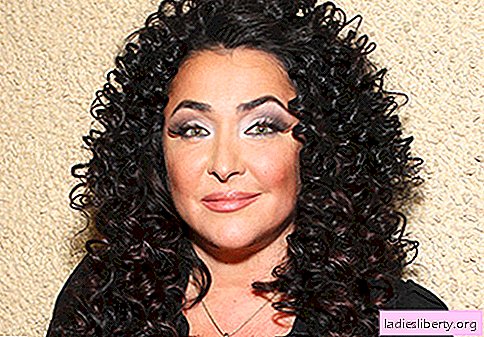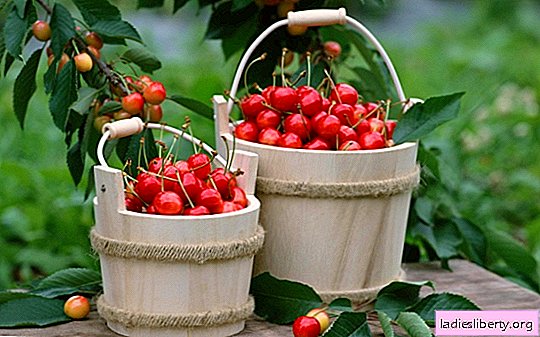
Guinea pig - a very entertaining rodent, able to please with funny sounds. Unlike other pets, this cute animal needs more attention and care of the owner.
Guinea pigs are almost always eaten, which requires careful preparation of the diet.
Feeding rules
The daily diet of a guinea pig is half hay. It is recommended to give dry food in the morning and at night, and greens and vegetables, when there is an opportunity to timely remove half-eaten food. In feeding guinea pigs there are no such meals as dinner or lunch, the animals nibble almost continuously, so you should not leave the feeder empty or clean it. It is advisable to put in a cage a salt stone containing minerals, especially this is in demand in winter.
Guinea pigs, due to the structural features of the intestines, are forced to eat a significant amount of coarse plant food, despite its low nutritional value. Fullness and variety of nutrition is achieved by adding dry feed, vegetables and fresh herbs, if possible using different products every day. The absence of diseases and the life span of the animal depends on what and how the guinea pig eats.
Features of feeding guinea pigs
You should not allow starvation of the guinea pig so that dehydration and depletion of the body do not occur. Feeding with bunches of plants should also be avoided, only small portions of roughage are fully digested by the rodent's intestines.
The body of the animal is hard to tolerate sharp changes in nutrition, so what the guinea pig usually eats should be changed gradually.
The daily addition of cereals and solid foods to the diet is essential for the natural grinding of teeth.
Important: the body of a guinea pig is not able to independently produce ascorbic acid. Therefore, if there are no multivitamin complexes in the rodent's feed, vitamin C is bred in drink, at the rate of 25 mg per daily serving of water.
Also, a small pig is given daily 0.5 g of salt, as the pet grows older, the portion is increased to 1.5 g.
What does guinea pig eat at home
A balanced diet of guinea pig necessarily includes roughage, cereal mixtures and fresh vegetables.
Most of the pet’s diet, especially in winter, comes from hay and twigs. Dry plants contain a little moisture, but are rich in fiber, which absorbs harmful substances.
Coarse food is indispensable for improving contractions of the intestinal walls, as well as for the normal state of microflora that processes cellulose.

With particular pleasure, guinea pigs eat oats, which makes it the main component of grain mixtures. Concentrates also contain sunflower seeds, peas, corn grains, and herbal granules containing vitamins are added to add value.
When choosing a grain mixture should take into account age, breed of guinea pig and health status. It must be remembered that excessive feeding of dry food in combination with a sedentary lifestyle of the animal will lead to overweight beloved pet.
Summer is the time of year when a pet can receive the maximum amount of nutrients with food. To saturate the animal's organism with macro- and microelements, fresh greens should be given as often as possible. The summer menu of guinea pigs is made up of various plants:
• plantain;
• leaves of young sedge;
• clover;
• fresh tops of carrots and beets.
Feeding vegetables and the benefits of fruits
Adding fruit to your pet’s diet, as well as feeding vegetables will require additional attention. Tomatoes will provide carotene and ascorbic acid, but guinea pigs are allowed to give only mature fruits that do not contain dangerous solanine.
Sheets of cabbage, causing strong gas formation, should also be added to the diet with caution. Favorite vegetable - fresh cucumber, due to its low calorie content, will benefit rodents that are overweight.
Vegetables that benefit the health of guinea pigs include parsley, which is rich in important macronutrients, vitamins, and has antimicrobial properties. It is also worth feeding your favorite pet with dill containing iron, potassium and carotene. Leafy vegetables reduce gas formation in the intestines, but large portions overload the rodent's digestive system with essential oils.
Healthy vegetables should also be included in the diet:
• pumpkin;
• zucchini;
• bell pepper
• spinach;
• green salad.

A moderate pear or apple dessert containing pectins, carotene and vitamins will delight the rodent and enhance its health. In addition to fruits, various berries rich in trace elements are added to the balanced menu of the pet. So mountain ash, rich in vitamin P in combination with ascorbic acid, will strengthen immunity and increase vascular strength. Guinea pigs eat fruit with pleasure, which leads to overeating and can cause disease, so sweet fruits are still better to give as a treat.
Foods that should not be fed
In order not to harm the health of the pet, you need to monitor what products get into the feeder. If the guinea pig has a small host, he should explain that to the rodent It is strictly forbidden to give:
• sweets and other sweets;
• milk products;
• bread, pies and other pastries;
• pasta;
• cereals;
• potatoes;
• the remnants of the food that a person ate.
Forbidden products not only can not be replaced with food, but it is also necessary to prevent contact with them when the guinea pig leaves its cage.
Properly selected roughage, grain additives and fresh vegetables create the necessary variety and balance of rodent nutrition. A well-thought-out feeding regime is the key to the health and longevity of a guinea pig. Favorite pet will surely please with amusing behavior if it is pampered with a fresh treat.











